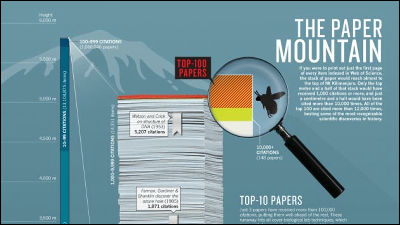The reality of fraudulent publications in mathematical sciences

A joint working group formed by the International Mathematical Union (IMU), which aims to promote international cooperation in the field of mathematics, and the International Congress on Industrial and Applied Mathematics (ICIAM), an international conference on applied mathematics held every four years, has published a report examining the reality of fraudulent publishing in mathematical sciences.
[2509.07257] Fraudulent Publishing in the Mathematical Sciences
https://arxiv.org/abs/2509.07257
Fraudulent Publishing in the Mathematical Sciences
https://arxiv.org/html/2509.07257v1
The participants in the report are students, teachers, authors, reviewers, editors, and committee members who contribute in some way to the creation, publication, consumption, and evaluation of research papers. However, in the academic environment at the time of writing, the quality and evaluation of research is heavily influenced by bibliometric analysis. Therefore, researchers have a strong motivation to optimize bibliometric data.
Unfortunately, the research team points out that an increasing number of researchers are using fraudulent means to optimize their rankings. Specifically, they are concerned with 'paper mills,' which refer to organizations or businesses that fraudulently mass-produce and sell research papers, 'predatory journals,' which refer to low-quality academic journals whose main purpose is to extract money from researchers, and 'citation cartels,' which are fraudulent practices in which researchers or academic journals artificially inflate citation counts by artificially citing each other.
The battle against 'paper factories' that mass-produce fake research using AI is intensifying - GIGAZINE

The researchers argue that these misconduct practices invade the scientific publishing ecosystem and endanger the integrity of the profession, and that the fact that most of the papers cited as references in research papers were published in the past five years 'highlights the urgency of the problem.'
The research team attributes the rampant publication fraud to 'the introduction of article publication fees as a business model for scientific publishing' and 'the growing demand for quantitative research evaluation.'
He also pointed out that companies that collect citation data and use it to create indices such as journal impact factors and h-indexes , as well as lists of highly cited researchers derived from this data, also have a negative impact.
The Top 100 Most Cited Papers in the World, Not Even Papers by Nobel Prize Winners - GIGAZINE

The research team points out that mathematical sciences, in particular, has fewer co-authorships and citations than other fields, and the indicators vary widely, making them more susceptible to manipulation and distortion.
Clarivate's Highly Cited Researchers (HCR), a well-known list of highly cited researchers, also removed mathematics-related papers from its HCR in 2023, citing that 'the field of mathematics is highly specialized, with a low number of publications and citations, so even a small increase in publications and citations can distort the evaluation and analysis of the field.'
The researchers point out that publication fraud can take many forms, ranging from minor misconduct to more deliberate and systematic manipulation. In addition to the typical examples of publication fraud, such as 'paper mills,' 'predatory journals,' and 'citation cartels,' they also point out that misrepresentation of authors or their affiliations, the use of ghostwriters , and the addition of authors without their consent are also widespread.
'The researchers on the Highly Cited Researchers list have also shown a higher rate of self-citations and citations to their own papers (known as self-referencing scores) than other researchers. This leads to artificially inflated citation counts, the research team argues. In contrast, mathematics laureates have more natural publication and citation patterns, and lower self-referencing scores.'
Additionally, in the field of mathematics, there has been an increase in the number of papers being retracted due to allegations of paper milling, plagiarism, duplication, etc. Certain publishers and academic journals have repeatedly caused problems, leading to the identification of problems with their peer review systems and quality control.
The advent of AI has made it easier for non-English speakers to write academic papers, but at the same time, it has also raised ethical issues about the duplication and manipulation of academic papers themselves. The research team pointed out that AI is being used to 'fabricate' fake research and plausible texts.
Generative AI tools make it easy to fabricate images and experimental data, threatening scientific research - GIGAZINE

Therefore, the research team argues that it is necessary to develop 'software to check the integrity of research,' strengthen detection technology, and establish transparent guidelines.
In addition, the research team pointed out that factors such as the spread of open access journals and article publishing fees, as well as the pressure on academic journals to pursue profits and focus on the number of papers published, are creating a breeding ground for a decline in quality and fraudulent publishing.
The research team argues that to better assess research, it is essential to consider methods that go beyond relying solely on quantitative metrics, strengthen the peer review process, establish systems to detect and prevent misconduct, and proactively address new risks posed by AI.
in Science, Posted by logu_ii